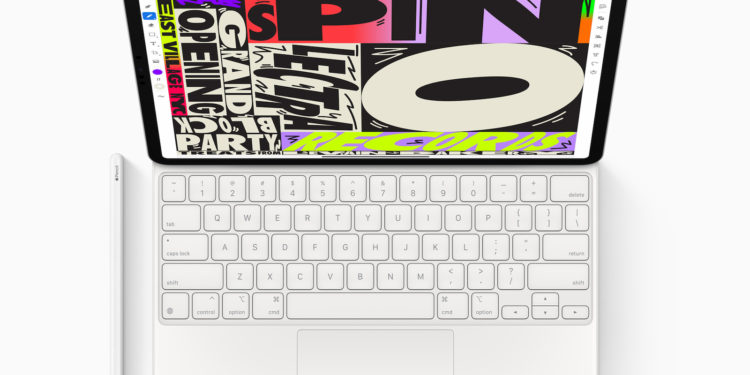Two Apple employees took time for an interview and talked about the decisions behind the iPad Pro with M1, the technical challenges of the device and why macOS is not coming to the iPad.
The new iPad Pro with M1 processor and Liquid Retina XDR display is available to customers today. The powerful processor has led to many questions about the future of Apple's tablet range and the state of the software on the platform. A member of the Apple Display Engineering team, Vincent Gu and Scott Broderick (iPad Product Marketing), sat down with Brian Tong for an interview in his video podcast The interview repeated many of the talking points and specifications of the iPad Pro. But there was also some new information about the product's development. When asked about the mini-LED display, Gu said it required a "whole new level of engineering." Apple couldn't just shove a mini-LED backlight behind its LED display and expect it to work effortlessly.
iPad Pro 12.9-inch with XDR display is 0.5 mm thicker
Gu described it as a visual challenge; the technology to sync the mini-LED with the display didn't exist and had to be reinvented from scratch. These challenges are part of the reason the 11-inch iPad Pro didn't get the display. Broderick says that users of the 12.9-inch iPad Pro expect the best technology and display possible, so that product was chosen for the new display. The 12.9-inch iPad Pro has become half a millimeter thicker by incorporating the mini-LED display, Broderick pointed out. Users of the 11-inch iPad Pro were more concerned about the size and weight of the device, engineers said, and that had to be taken into account. Aside from other technological limitations and size constraints, it was paramount that the one-pound tablet stay the same size and shape.
Are there any plans for future software?
Developing the iPad Pro with the M1 processor, Thunderbolt port, and software considerations was a complete hand-crafting effort. Getting the display to work was a collaborative effort between the display team, iPadOS team, and M1 team together. According to Broderick, both the display and the port play an important role in making the iPad Pro a powerful device for developing HDR content. Connecting peripherals like powerful external displays or fast Thunderbolt hard drives is part of the creative process, so the iPad Pro needed a powerful Thunderbolt port. Gu and Broderick could not comment on future software or other plans for the product. They pointed to the apps that take advantage of the iPad's unique technology, such as Adobe with Apple Pencil or Procreate with LiDAR for 3D rendering. Tong asked if there were any considerations to running Boot Camp or macOS on the iPad Pro since it has a Mac processor.
Apple: “Every platform is unique”
Broderick responded that every platform is unique and different and will remain so. The iPad is primarily designed for touch, has cameras, accessories and apps that take advantage of that. The Mac is designed so that the mouse and keyboard are the focus of interaction, and the apps reflect that. Broderick added that the iPad and Mac will remain different. But Apple also wants to emphasize how the products work together. With Continuity or features like SideCar, the devices become even more powerful in tandem. The new generation with 11-inch starts at 879 euros, while the 12.9-inch version is set at 1,199 euros. If you want the high-end version, you have to pay a whopping 2,579 euros. (Image: Apple)





